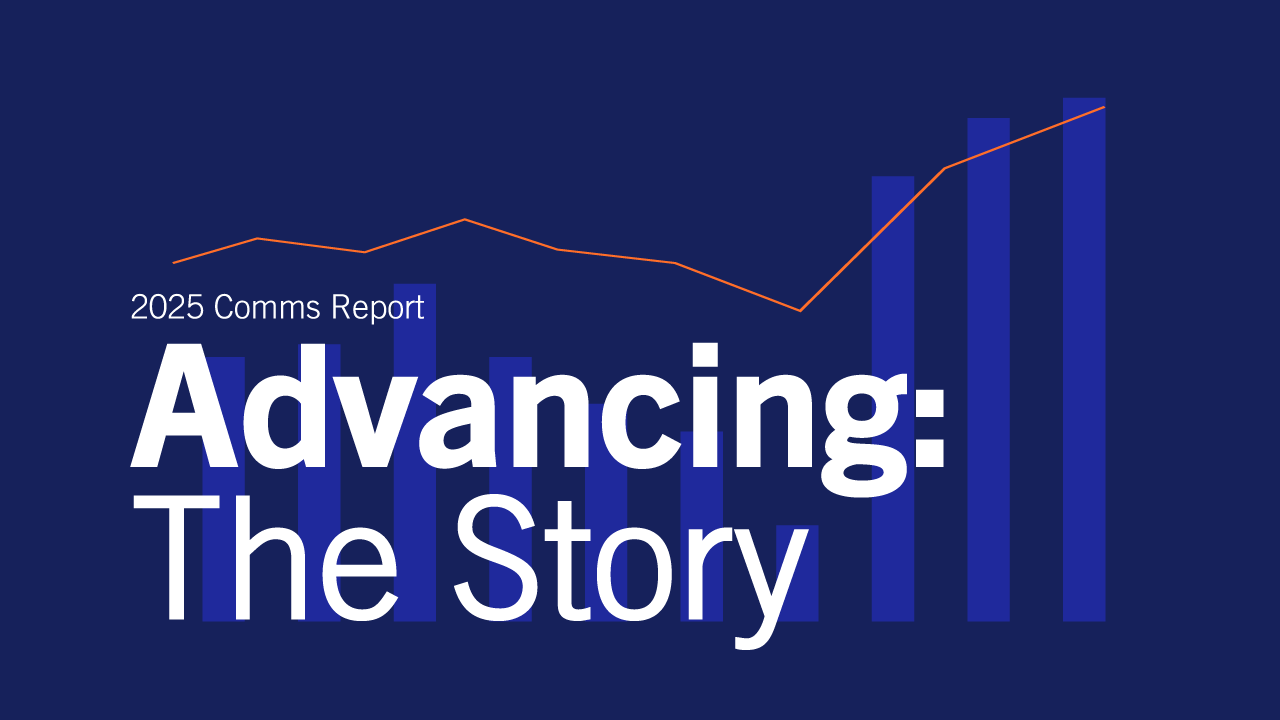In an industry where getting ahead – of breaking news, of media coverage, of competitors – is the name of the game, why do so many of us feel like we’re always struggling just to keep up?
Perhaps it's because, according to the 2025 Comms Report, a Cision/PRWeek survey of over 300 senior-level PR and communications leaders, most comms leaders feel more pressure than ever to “do more with less.” Fewer resources to work with means less time and talent to devote to proactive communication efforts, and it’s negatively impacting teams’ ability to work.
According to the same report, when asked to identify the number one obstacle getting in the way of effective comms efforts, survey respondents cited “a strategy that is too reactive versus proactive.”
At a time when information travels faster than ever and can have game-changing consequences for brands, PR and comms teams can no longer afford to be reactive. Most PR and comms teams understand that moving from a reactive communication strategy to a proactive one can significantly enhance brand reputation, media relationships, and overall effectiveness. But how do you make that leap? Let’s start from the beginning.
What’s the Difference Between Reactive and Proactive Communication?
Reactive communication involves responding to external events or issues after they arise, while proactive communication focuses on anticipating and creating opportunities for positive publicity. Where reactive communication might involve your organization’s CEO appearing on the news to reframe a story after a scandal emerges, proactive communication might see that same CEO discussing a new product feature based on customer feedback.
While proactive strategies have numerous advantages for PR teams (more on that below) it’s important to maintain the ability to react effectively when necessary. The most effective PR strategies rely on a balance of reactive and proactive communication tactics.
Benefits of Creating a Proactive Communication Strategy
While reactive comms remains crucial for addressing unexpected events and exercising agility as situations change, a proactive approach will give you more control over the narrative and enable you to focus more on honing the right messages and generating positive coverage for your brand. This leads to three big benefits for integrating proactive communication into your longer-term strategies:
Enhanced brand reputation: According to our survey, CEOs’ No. 1 priority for their comms teams is to “build sustainable growth priority and value for the brand.” Proactive communication strategies support these goals by enabling PR and comms teams to shape their brand narratives and establish a strong, positive brand identity through consistent messaging, thought leadership content, and storytelling.
Better crisis management: Only 21% of comms leaders rate their ability to prevent crises before they happen as “excellent,” the same survey found. This finding underscores a major gap in the comms playbook. When it comes to crisis preparedness, a proactive communication plan is critical. Proactive strategies allow organizations to plan ahead and anticipate how to handle issues before they arise. (Check out our Crisis Comms Checklist for more on crafting an effective, proactive crisis plan.)
Improved media relationships: A proactive communication plan entails building a network of journalists – a top challenge for comms teams, according to the same survey – and other media influencers and establishing those relationships before pitching them a story you want them to cover. Taking the time to build trust and credibility with the media will be more likely to earn you positive earned media coverage over the long haul.
6 Steps to Crafting a Proactive Communication Strategy
Moving from a reactive to a proactive communication strategy not only requires a shift in how you work, but a shift in mindset, too. Keep in mind the benefits mentioned above while following the steps below, which will help you achieve both.
Identify your goals: As with almost any other business endeavor, proactive communication strategies need established goals in order to measure success. Think about what you want to accomplish with your strategy, and how it aligns with larger business goals. Consider using the SMART framework (specific, measurable, achievable, relevant, and time-bound) to define your goals and map out a plan for meeting them.
Build strong media relationships: Build a media list of journalists and influencers relevant to your brand and industry and start cultivating relationships with them. Get in their good graces by offering unique value, such as new industry data, exclusive interviews with subject matter experts, or behind-the-scenes access to events. Moreover, demonstrate that you understand the beats they cover and the kind of stories that appeal to their audiences. Building credibility with the media and establishing yourself as a trusted resource for newsworthy information will increase the likelihood of your pitches getting picked up and generating positive media coverage for your brand.
Make a habit of media monitoring and social listening: Shifting to a proactive mindset requires staying ahead of news, events, or activities that could impact your brand and require you to act quickly. Use media monitoring and social listening tools to identify emerging trends, newsjacking opportunities, and potential crises. Consider investing in AI-powered tools that will not only surface relevant updates in real time, but provide insights into how best to respond.
Create a content calendar: Create a calendar of compelling content – such as thought leadership articles, industry reports, or product announcements – that you can produce and align with industry events, seasonal trends, key cultural moments, and anticipated news cycles. With a pipeline of valuable content in the queue, you’ll have a ready supply of material for proactive media outreach. (Pro tip: Here, too, is where media monitoring and social listening are key: By tracking how the media is covering your content – or that of your competitors – and how consumers are engaging with it, you can identify the right topics, formats, and distribution channels for your plan.)
Establish a review and approval process: An effective strategy requires alignment and buy-in from the right stakeholders, often across various departments – PR, marketing, sales, and customer support. Identify who those stakeholders are at the beginning, including who reviews what, at which stage, and who gets final approval. Consider holding regular, cross-functional meetings to keep everyone in the loop and identify any roadblocks or opportunities. Setting up a streamlined review and approval process will enable you to execute your plan efficiently while ensuring message consistency and alignment with organizational goals.
Measure, refine, repeat: Regularly assess the effectiveness of your proactive PR and comms efforts through key performance indicators (KPIs). Once again, media monitoring and social listening tools will be key here. By tracking metrics such as earned media mentions, share of voice, and sentiment analysis, you can understand what’s working, where there are opportunities to improve, and how you can refine your strategy moving forward.
Final Thoughts
The struggle to keep up is not just a familiar one for PR and comms teams, it is top of mind for most. The same Cision/PRWeek survey found that the biggest media-related challenger among PR and comms leaders was “the ability to respond effectively in today’s 24/7/365 reality.” Organizations need to move beyond simply reacting to news – such an approach is no longer sustainable.
Shifting toward a more proactive communication strategy can help alleviate this pain point, empowering PR and comms teams with the resources to move quickly and not just keep pace, but lead the conversation.
And if the challenge of “doing more with less” is one that resonates with your team, it helps to have a streamlined tool that incorporates the tactics above – media monitoring, social listening, and media relationship management – all in one. A tool like CisionOne, for example, positions teams to both react quickly and get ahead of emerging issues as they occur.
Learn more about how CisionOne can help you apply these tips for integrating proactive communication into your current PR strategy. Speak to an expert.
Most Recent Posts
Cision Resources
-
E-books and Guides
Comprehensive how-to guides on strategy and tactics
-
Case Studies
What are other brands doing – and how can we learn from them?
About Mary Lorenz
Mary Lorenz is Director of Content and Creative at Cision. She oversees the editorial strategy at Cision and writes about best practices and thought leadership for marketing, communications and public relations professionals. She has a background in marketing, public relations and journalism and over 15 years of experience in copywriting and content strategy across a variety of platforms, industries and audiences.
Learn More. Do More. demo new
PR Tips, Case Studies, and Product Updates

[On-Demand Webinar] The Next Generation of Media Intelligence: From Gorkana to CisionOne
Explore CisionOne, a revolutionary media intelligence platform, and the evolution of Gorkana. Learn key features and strategies from Luke Williams, CisionOne Product Marketing Manager. Elevate your media outreach to new heights!


